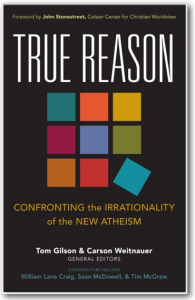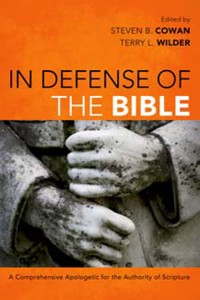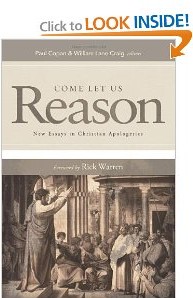In last week’s post, Fallacy Friday: What is an Argument?, we established that an argument is a set of reasons (or premises) offered in support of a conclusion. We noted that arguments always have two components: premises and conclusions. We also observed that premises sometimes can be implicit or unstated.
 Of course knowing what an argument is, in and of itself, does not help us much to ascertain whether the argument in front of us is a good one or a bad one. When we are faced with conflicting arguments we want to know how to evaluate them; that is what logic and analytical philosophy is all about. Here I will say a couple of things about how one goes about assessing an argument.
Of course knowing what an argument is, in and of itself, does not help us much to ascertain whether the argument in front of us is a good one or a bad one. When we are faced with conflicting arguments we want to know how to evaluate them; that is what logic and analytical philosophy is all about. Here I will say a couple of things about how one goes about assessing an argument.
First, note that in assessing arguments we are interested in truth. It should not need saying but arguments are not good arguments because the arguer makes us feel good or looks good or what they say sounds nice or like the easy option or like what all our peers think and so on.
The exact definition of what truth is remains a matter of philosophical debate. Aristotle described the intuitive idea several thousand years ago when he stated,
“To say of what is that it is not, or of what is not that it is, is false; while to say of what is that it is, and of what is not that it is not, is true.”
A proposition or assertion is true when what it affirms is, in fact, the case and it is false when what it affirms is, in fact, not the case.
However, merely having a true conclusion as part of our argument is not enough. As I noted last week, we can believe a true conclusion for really bad reasons, so we should not just aim at our argument having a true conclusion -we want to hold to true conclusions for good reasons. In working out whether an argument has good reasons and a true conclusion, two features are crucially important: these are validity and soundness.
Validity
In logic the word ‘valid’ has a technical and precise meaning; it means an argument is structured in such a way that it is impossible for the premises to be true and the conclusion false. An example would be as follows:
Premise: All men are under 10 feet tall;
Premise: John is a man;
Conclusion: John is under 10 feet tall.
This argument is valid because the premises cannot both be true and the conclusion false. If it is true that all men are under 10 feet tall and if it is true that John is a man then John cannot be over 10 feet tall. If it were possible for John to be over 10 feet tall then the first premise would mean he could not be a man, which, of course, would contradict the second premise.
Note in this technical sense of ‘valid’, validity is a feature of an argument. In common colloquial language people talk of someone having a “valid point” but in logic we do not do this; arguments, not points, are valid only if it is impossible for the premises to be true and the conclusion false.
Soundness
Validity is one feature of a good argument but another is soundness; a sound argument is a valid argument which has true premises. The difference between validity and soundness can be illustrated with an example.
Premise [1]: if I currently live in Waitakere then the Labour Party are in government;
Premise [2]: I currently live in Waitakere;
Conclusion [3]: Labour are in government.
This argument is valid: if both premise [1] and premise [2] are true then it is impossible for Labour to not be in government. However, despite being valid the argument is unsound. As I write this, the National Party is in government so, while I do reside in Waitakere, premise [1] is false.
This example shows the distinction between a valid argument and a sound one; an argument is valid when it is impossible for its premises to be true and its conclusion false. When we look for validity we ask if all the premises are true, could the conclusion be false? An argument is sound when, in addition to being valid, it is also the case that its premises are true.
Responding to an Argument
Now, no rational person can reject an argument unless they can claim that the argument is unsound. This means they must either reject one or more of the premises of the argument or if they affirm the premises, they must hold that it is possible for these premises to be true and yet the conclusion false. What they cannot do is accept the argument as valid, accept the premises and then reject the conclusion. As we saw above, this leads to contradictions.
It follows that a person can only reject a conclusion that has been argued for if they reject either one or more of the premises or they reject the argument as invalid.
When this is put alongside what we covered in the previous Fallacy Friday post, it suggests an implict method for responding to an argument. If a person offers an argument for a conclusion, four questions are pertinent:
- What are the premises – both explicit and implicit?
- Are there any reasons for thinking the premises are false?
- Are there any reasons for thinking the premises are true?
- Is the argument valid – is it possible for the premises to be true and the conclusion false?
These points are an important backdrop to understanding fallacies because fallacies almost always involve rejecting a position that someone has offered an argument for without providing any reason for rejecting a premise or without providing any reason for thinking an argument invalid. Instead, fallacies involve people evading these issues or changing the subject. It is to common fallacies of this sort that we will turn for the rest of this series.
Every Friday I publish another post in my Fallacy Friday series. To navigate the whole series, use the Fallacy Friday tag.
Apologetics 315 are producing an audio version of this series, also released every Friday. Subscribe to the Fallacy Friday Podcast using:
• RSS Feed, or
• Via iTunes, or
• one-click to your feed-reader
Tags: Aristotle · Fallacy Friday9 Comments


 A common objection to belief in the God of the Bible is that a good, kind, and loving deity would never command the wholesale slaughter of nations. In the tradition of his popular Is God a Moral Monster?, Paul Copan teams up with Matthew Flannagan to tackle some of the most confusing and uncomfortable passages of Scripture. Together they help the Christian and nonbeliever alike understand the biblical, theological, philosophical, and ethical implications of Old Testament warfare passages.
A common objection to belief in the God of the Bible is that a good, kind, and loving deity would never command the wholesale slaughter of nations. In the tradition of his popular Is God a Moral Monster?, Paul Copan teams up with Matthew Flannagan to tackle some of the most confusing and uncomfortable passages of Scripture. Together they help the Christian and nonbeliever alike understand the biblical, theological, philosophical, and ethical implications of Old Testament warfare passages.





Weekly Apologetics Bonus Links (01/21 – 01/28)…
Here are this week’s recommended apologetics links. Enjoy. Fallacy Friday: Assessing Arguments…
Does anyone remember Lindsay Perigo’s refusal to accept that an argument could be valid with false premises? Are they any Randians out there who recall this any where he was coming from?
Max, I think that was in an exchange he had with Robert Nola in the free radical. From memory Lindsay was concerned to reject the idea that “logic did not describe reality”. He seemed to think that if a logically valid argument can have false premises, then you were denying this and therefore some kind of irrationalist who thinks the contradictions can occur in the real world. It was confused
Yes that sounds about right. From my memory he did not understand/accept the distinction between soundness and validity. A surprising number of students find this a very hard thing to grasp. You would thing you could be told the definitions once, and they they would get it, but it is clearly not as obvious as it seems to a lot of people.
[…] but note the word sometimes here; sometimes this is true and sometimes it is not. As I noted in Assessing Arguments, a valid argument is one where it is impossible for the premises to be true and the conclusion […]
Fallacy Friday: Assessing Arguments…
The Fallacy Friday Podcast is the weekly audio version of Matthew Flannagan’s Fallacy Friday posts over at the MandM blog. Apologetics315 is producing the audio version, released every Friday as well. Listen here….
[…] Friday I publish another post in my Fallacy Friday series. To navigate the whole series, use the Fallacy Friday […]
[…] speaking, an argument that begs the question is valid. In Analysing Arguments, I explained that a valid argument is one where it is impossible for the premises to be true and […]
Good assessment. I remember this logic from 8th grade math class. If the premises are true and the conclusions is supported by the premises, than the argument is valid. An example where the conclusion is not supported by the premise would be if all dogs are animals and Chubacca is an animal, Chubacca is a dog. (False). Though your post was spot on, there is one other thing I would have added, and that is the “converse”. If Chubacca is not a dog, then he is not an animal. (False Converse). However, if Chubacca is not an animal, he is certainly not a dog. (True Converse). Also, If Chubacca were a dog, he would be an animal. (True). The converse is always true if the premises are true.